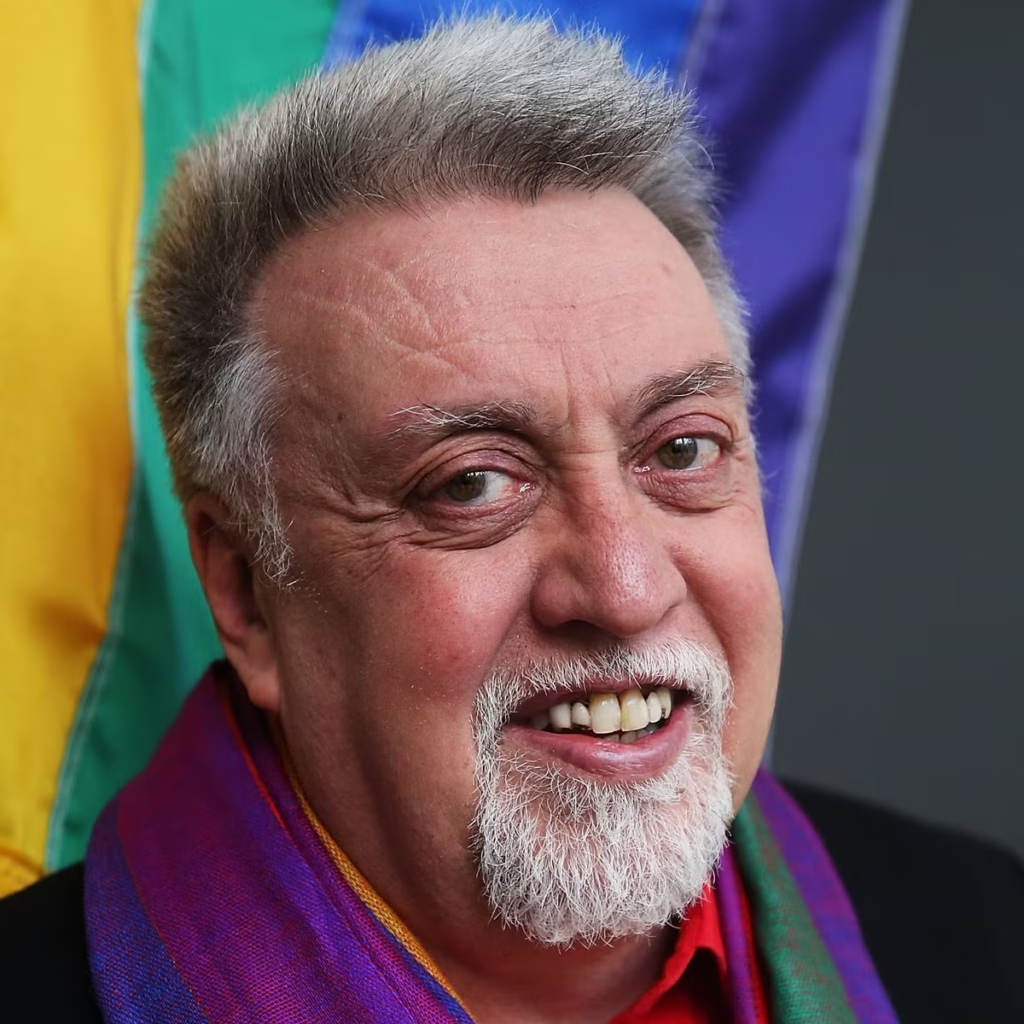
Table of Contents
Who Was Gilbert Baker?
Gilbert Baker, often referred to as the “gay Betsy Ross,” was an American artist, LGBTQ rights activist, and the creator of the iconic rainbow flag. A skilled vexillographer, his work spanned over three decades and set two world records. Baker’s artistic contributions were instrumental in shaping and solidifying the LGBTQ rights movement. He passed away on March 31, 2017, at the age of 65.
Early Life
Born on June 2, 1951, in the small rural town of Chanute, Kansas, Gilbert Baker came from a prominent family. His mother was an educator, and his father served as a judge and lawyer. Though he had an outgoing personality, Baker often felt alienated due to his sexuality. After graduating from high school, he attended college for a year before being drafted into the Army. Stationed in San Francisco during the rise of the gay liberation movement, he found a sense of belonging in the city’s vibrant activist community. Following a two-year military service, he was honorably discharged and settled in San Francisco.
Activism
In the 1970s, Baker immersed himself in the city’s LGBTQ activism scene. He participated in drag shows and became a member of the Sisters of Perpetual Indulgence, a non-profit LGBTQ advocacy group known for its unique approach to raising awareness about gender and sexual intolerance. A talented drag performer and emerging activist, Baker collaborated with Harvey Milk, the first openly gay elected official in California. Baker became a key figure in Milk’s political efforts, using his sewing skills to create banners for protests, including those for the Vietnam War and gay rights. When Baker’s first rainbow flags debuted, Milk was proudly present beneath them.
Creation of the Pride Flag
Amid the growing momentum of the gay liberation movement, Harvey Milk and other activists enlisted Baker to design a symbol that would represent the community. Baker, who believed that flags symbolize power, embraced the idea of creating a flag as a way to proclaim the movement’s strength. In 1978, he began designing the rainbow flag, aiming to craft something beautiful, distinctive, and unmistakably representative of the LGBTQ community.
The original flag featured eight vibrant stripes, each with its own meaning: hot pink (sexuality), red (life), orange (healing), yellow (sun), green (nature), blue (art), indigo (harmony), and violet (human spirit). With the help of volunteers, Baker used organic cotton and natural dyes to craft the first two flags, which were displayed during the San Francisco Gay Freedom Day Parade on June 25, 1978.
Following the tragic assassination of Harvey Milk in November 1978, demand for the flag surged. However, due to a shortage of hot pink fabric, the flag was reduced to seven stripes, and later to six (red, orange, yellow, green, blue, and violet) to maintain symmetry for parades and festivals. The six-stripe version of the flag, which continues to symbolize the diversity and unity of the LGBTQ community, is now recognized worldwide as a powerful emblem of LGBTQ pride and support.
More Rainbow Flags and Artwork
Gilbert Baker continued to promote the rainbow flag throughout his career as an artist, working at the Paramount Flag Company, which he credits with amplifying the flag’s global significance through its mass production. In the 1980s, Baker gained recognition as a prominent artist for civic, state, and national events, including his contribution to the 1984 Democratic National Convention. His work extended to designing flags for various world leaders, such as the Premier of China, the King of Spain, and the Presidents of France and Venezuela. One of his 1992 rainbow silkscreens even adorned the West Wing Office complex of the White House during Bill Clinton’s presidency.
Baker shared his rainbow flag textiles, photographs, oil paintings, and other art with global audiences. Notable exhibitions included World Pride in Rome (2000), the New York Gay Community Center (2002), the San Francisco Public Library (2003), and the San Francisco LGBT Community Center (2003). His original rainbow flag design was acquired by the Museum of Modern Art (MoMA) in New York City, cementing its place in the prestigious museum’s design collection.
Record-Breaking Rainbow Flags
In 1994, Baker was commissioned to design a massive, mile-long (30-feet-wide) rainbow flag, which was carried by 10,000 participants during the New York City parade commemorating the 25th anniversary of the Stonewall uprising. In 2003, Baker designed another monumental flag to celebrate the 25th anniversary of the rainbow flag itself. This time, the mile-and-a-quarter-long flag stretched from the Gulf of Mexico to the Atlantic Ocean in Key West and employed the original eight colors of the flag. Both flags were recognized by Guinness World Records as the world’s largest flags at the time, and the flags were later cut into sections and sent to over a hundred cities worldwide.
Death and Tributes
Beyond the creation of the iconic rainbow flag, Baker also authored artwork, essays, articles, and speeches about the flag’s significance. He never sought to trademark the rainbow flag, instead viewing it as a gift to the world. In a remarkable act of dedication, he returned to San Francisco to recreate the original banners and flags he had made in the 1970s for authenticity in the Academy Award-winning film Milk (2008), starring Sean Penn.
Even in the final stages of his life, Baker continued his artistic work. Just before his death, he created 39 nine-color flags, adding lavender to the original eight colors to symbolize diversity in honor of the 39th anniversary of the first rainbow flag, as noted in his obituary in the New York Times.
Gilbert Baker passed away on March 31, 2017, from hypertensive and atherosclerotic cardiovascular disease at his home in New York City at the age of 65. His legacy is honored in the documentary Rainbow Pride (2003), and his original sewing machine, used to create the first rainbow flag, is on display at The GLBT Historical Society in San Francisco.
